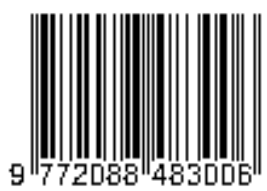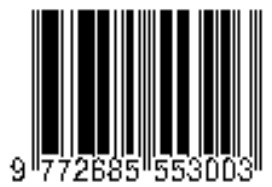PENGEMBANGAN PERANGKAT PEMBELAJARAN HIBRIDA (HYBRID LEARNING) PADA MATAKULIAH BIOKIMIA MAHASISWA S1 ILMU KEPERAWATAN STIKES HAMZAR
Abstract
Biochemistry especially on the biochemistry II subject is reputed as one of the difficult subject by the student. This cause by great quantities of the subject that explain in abstract form. One of the subject that reputed as the difficult one in bio-chemistry that also often make a misconception is metabolism. For example, many of them do not understand how CO2 could form glucose and is the metabolism still exists on the night. Many alternatives that may be used to resolve such problems, one of which is to develop appropriate learning tools and appropriate example combines online learning with face-to-face learning, known as the hybrid or blended learning research learning. The purpose of this developing research is to; (1) get the hybrid learning (hybrid learning) materials photosynthesis in biochemistry courses, (2) determine the feasibility of the development of hybrid learning (hybrid learning) materials photosynthesis in biochemistry courses, and (3) determine the effectiveness of the hybrid learning (hybrid learning) materials biochemistry of photosynthesis in the course of the development. This developing learning ware adopting 4D models that developed by Thiagarajan, and Semmel which consists 4 steps. The first step consists of three main activities, namely: (1) analysis of bassic competencies for photosynthesis forces materials, (2) analysis of the needs of students, and (3) the formulation of indicators of learning outcome. The second step is the design tool learning will be developed. The third step is the development of learning tools . The fourth step is the dissemination of the developed learning tools . Prior to the fourth step, the developed learning tools is reviewed by two Malang State University chemistry professor and two lecturers IKIP Mataram, a chemistry teacher and three undergraduate chemistry education courses IKIP Mataran. This review is used to find out the appropriateness of learning tools developed based on the content , language and preesntation. The effectiveness of learning tools developed based on a comparison of student learning outcomes using hybrid learning and students who are using hybrid learning. The data collected consists of qualitative and quantitative data. The qualitative data consists of feedbacks and suggestions for improvement of learning tool developed given by chemistry lecturers, chemistry teacher and student of chemistry study program. The qualitative data were collected using the learning material assessment instrument developed based on standards assessment of learning material formulated by Badan Standar Nasional Pendidikan (BSNP). The quantitative data consist of answers of the questionary about students perceptions of the implementation of hybrid learning and score of student learning achievement. The quantitative data collected using questionary and students learning achievement test. Development results showed that: (1) hybrid learning device that has been developed on the photosynthetic material consists of printed teaching materials, teaching materials online, lesson plan, and evaluation; (2) hybrid learning devices that have been developed are categorized feasible. Feasibility in terms of the feasibility of the content, language and presentation; (3) device has been developed effective learning in terms of student mastery learning because 81.5% of the students have met the prescribed universities mastery learning
References
[2] Adnyana, P., G., Keterampilan Berfikir Kritis dan Pemahaman Konsep Anak Pada Model Siklus Belajar Hipotesa Deduktif, (Jurnal pendidikan dan Pengajaran, Jilid 45, No 3, 2012)
[3] Anwar, C. (2017). Teori-teori P e n d i di k a n Klasik Hingga Kontemporer. Yogyakarta: IRCiSoD.
[4] Arikunto, S., Dasar-dasar Evaluasi Pendidikan, (Jakarta : PT Bumi Aksara, 2013)
[5] Barlia, L., Konstruktivisme dalam Pembelajaran Sains Di SD : Tinjauan Epistemologi,Ontologi dan Keraguan dalam Praksisnya,
(Jurnal Cakrawala Pendidikan, Th. XXX, No. 3, 2011)
[6] Calting, J., & Ling, J, Psikologi Kognitif.
(Noermalasari Fajar Widuri, Penerjemah), (Jakarta : Penerbit Erlangga, 2012)
[7] Chamidah, N., A., Deteksi Gangguan
Pertumbuhan dan Perkembangan Anak, (Jurnal Pendidikan Khusus, Vol. 5 No. 2, 2009)
[8] Crain W., Teori Perkembangan : Konsep dan Aplikasi, terj. Yudi Santoso (Cet. Ke-2), (Yogyakarta : Pustaka Belajar, 2014)
[9] Desmita, Psikologi Perkembangan, Cet. Ke-9, (Bandung : PT Remaja Rosdakarya, 2015)
[10] Ekayanti, D., et al., Analsis Materi Pokok SD/ MI, (Makasar : Pena Indis, 2017)
[11] Feldman, D., R., Old, S.,W., S. & Papalia, E., D., Human Dovelopment (Psikologi
Perkembagan) : Bagian I s/d IV (A. K. Anwar, Penerjemah), (Jakarta : Kencana Prenada Media Group, 2008)
[12] Feldman, Old & Papalia, Human Development (Briyan Marswendy, Penerjemah, (Jakarta: Salemba Humanika, 2009)
[13] Fudyantara, K., Psikilogi Perkembangan, (Yogyakarta : Pustaka Pelajar, 2001)











